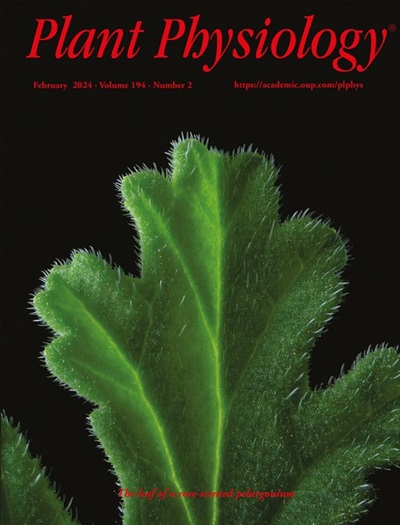根系对有限磷酸盐供应的发育反应:研究进展及在谷物中的应用
IF 6.5
1区 生物学
Q1 PLANT SCIENCES
引用次数: 0
摘要
磷(P)是一种必需的宏量营养元素,对植物的生长和发育至关重要。然而,土壤中可利用的无机磷酸盐(Pi)通常很少,其有限的流动性加剧了植物的缺磷状况。植物已经发展出复杂的机制来适应缺磷的土壤。根系是植物与土壤的主要界面,在植物适应 Pi- 有限的土壤环境中起着至关重要的作用。根系结构通过动态调节主根和/或冠根的长度、侧根的增殖和长度、根毛的发育以及根的生长角度来响应π的可用性,从而对π的获取产生重大影响。本综述将重点关注谷物根系发育对 Pi 饥饿响应变化的生理、解剖和分子机制,主要侧重于模式单子叶植物水稻(Oryza sativa)。我们还回顾了最近在改变根系结构以提高作物对钾的吸收效率方面所做的努力,并提出了未来的研究方向,旨在基于根系结构遗传改良作物对钾的吸收和利用效率。本文章由计算机程序翻译,如有差异,请以英文原文为准。
Developmental responses of roots to limited phosphate availability: research progress and application in cereals
Phosphorus (P), an essential macronutrient, is crucial for plant growth and development. However, available inorganic phosphate (Pi) is often scarce in soil, and its limited mobility exacerbates P deficiency in plants. Plants have developed complex mechanisms to adapt to Pi-limited soils. The root, the primary interface of the plant with soil, plays an essential role in plant adaptation to Pi-limited soil environments. Root system architecture significantly influences Pi acquisition via the dynamic modulation of primary root and/or crown root length, lateral root proliferation and length, root hair development, and root growth angle in response to Pi availability. This review focuses on the physiological, anatomical, and molecular mechanisms underpinning changes in root development in response to Pi starvation in cereals, mainly focusing on the model monocot plant rice (Oryza sativa). We also review recent efforts to modify root architecture to enhance P uptake efficiency in crops and propose future research directions aimed at the genetic improvement of Pi uptake and use efficiency in crops based on root system architecture.
求助全文
通过发布文献求助,成功后即可免费获取论文全文。
去求助
来源期刊

Plant Physiology
生物-植物科学
CiteScore
12.20
自引率
5.40%
发文量
535
审稿时长
2.3 months
期刊介绍:
Plant Physiology® is a distinguished and highly respected journal with a rich history dating back to its establishment in 1926. It stands as a leading international publication in the field of plant biology, covering a comprehensive range of topics from the molecular and structural aspects of plant life to systems biology and ecophysiology. Recognized as the most highly cited journal in plant sciences, Plant Physiology® is a testament to its commitment to excellence and the dissemination of groundbreaking research.
As the official publication of the American Society of Plant Biologists, Plant Physiology® upholds rigorous peer-review standards, ensuring that the scientific community receives the highest quality research. The journal releases 12 issues annually, providing a steady stream of new findings and insights to its readership.
 求助内容:
求助内容: 应助结果提醒方式:
应助结果提醒方式:


